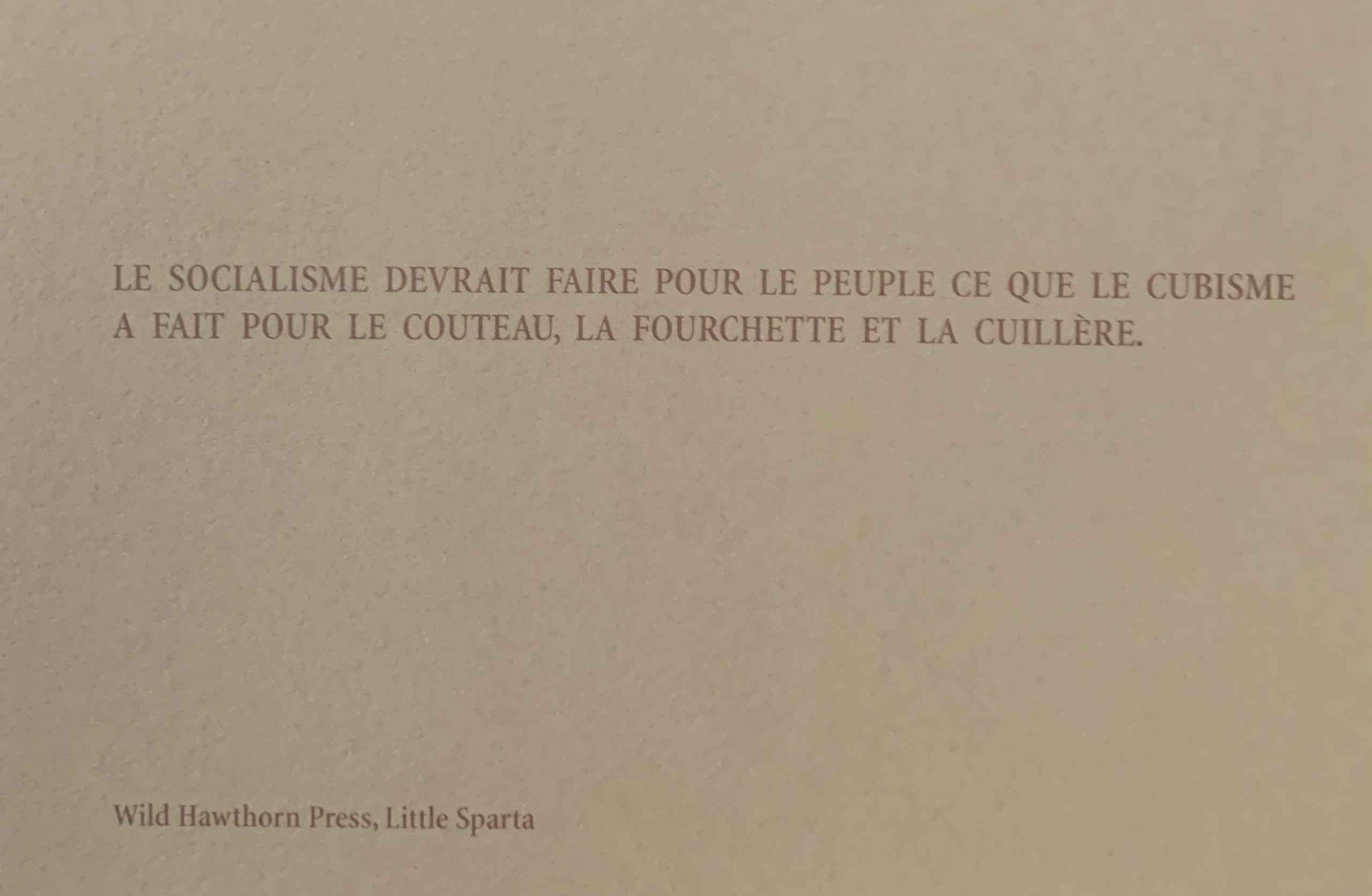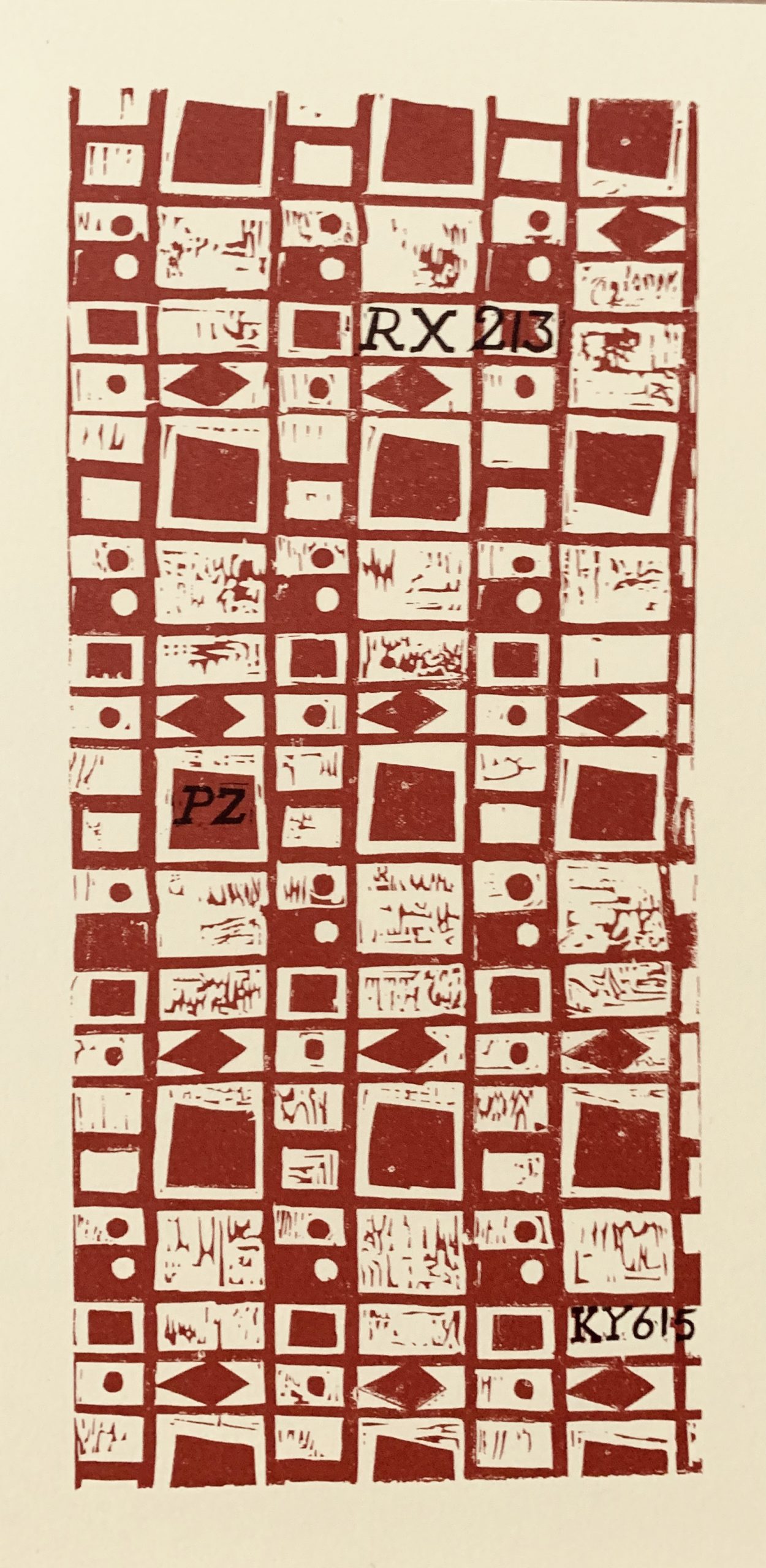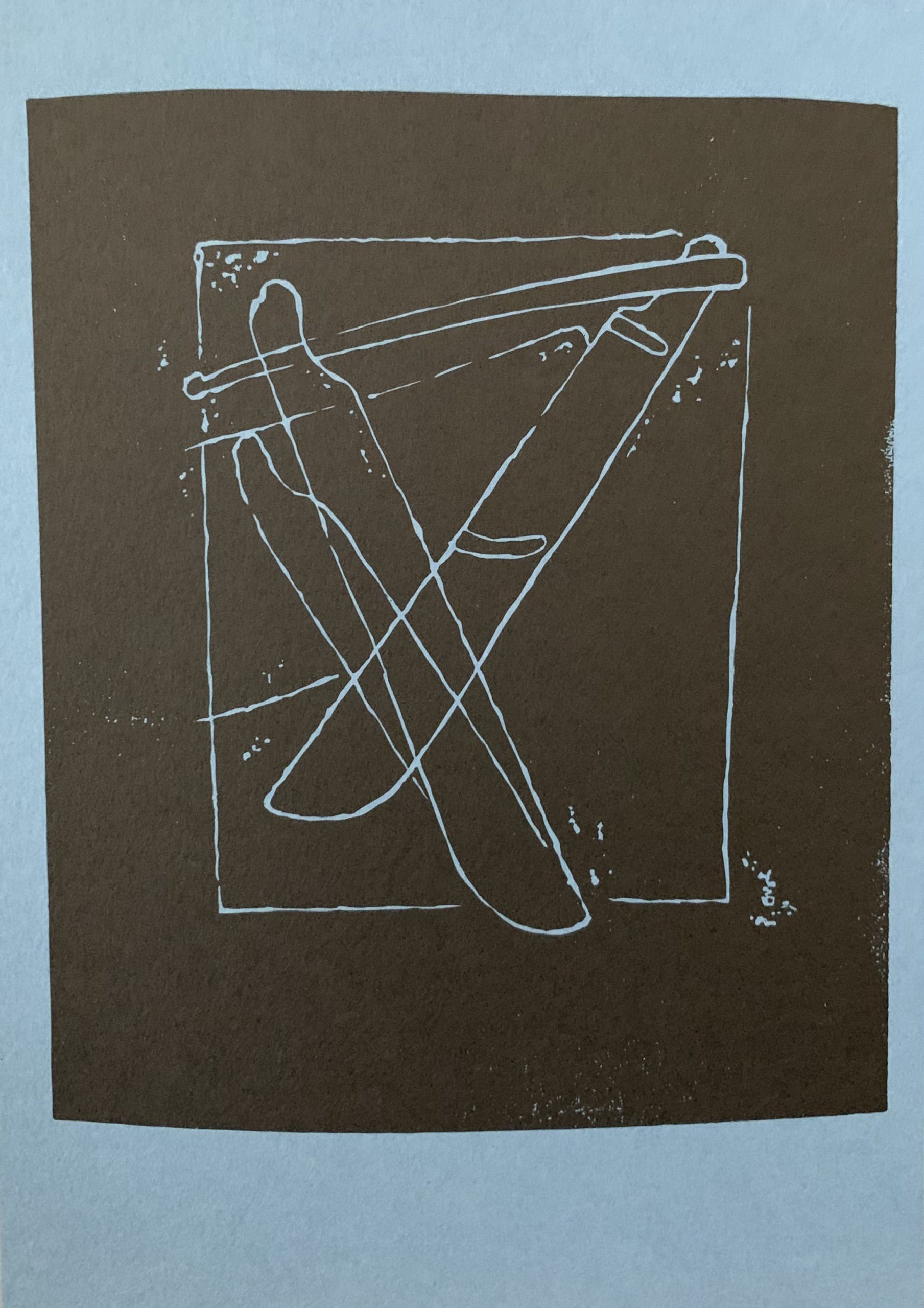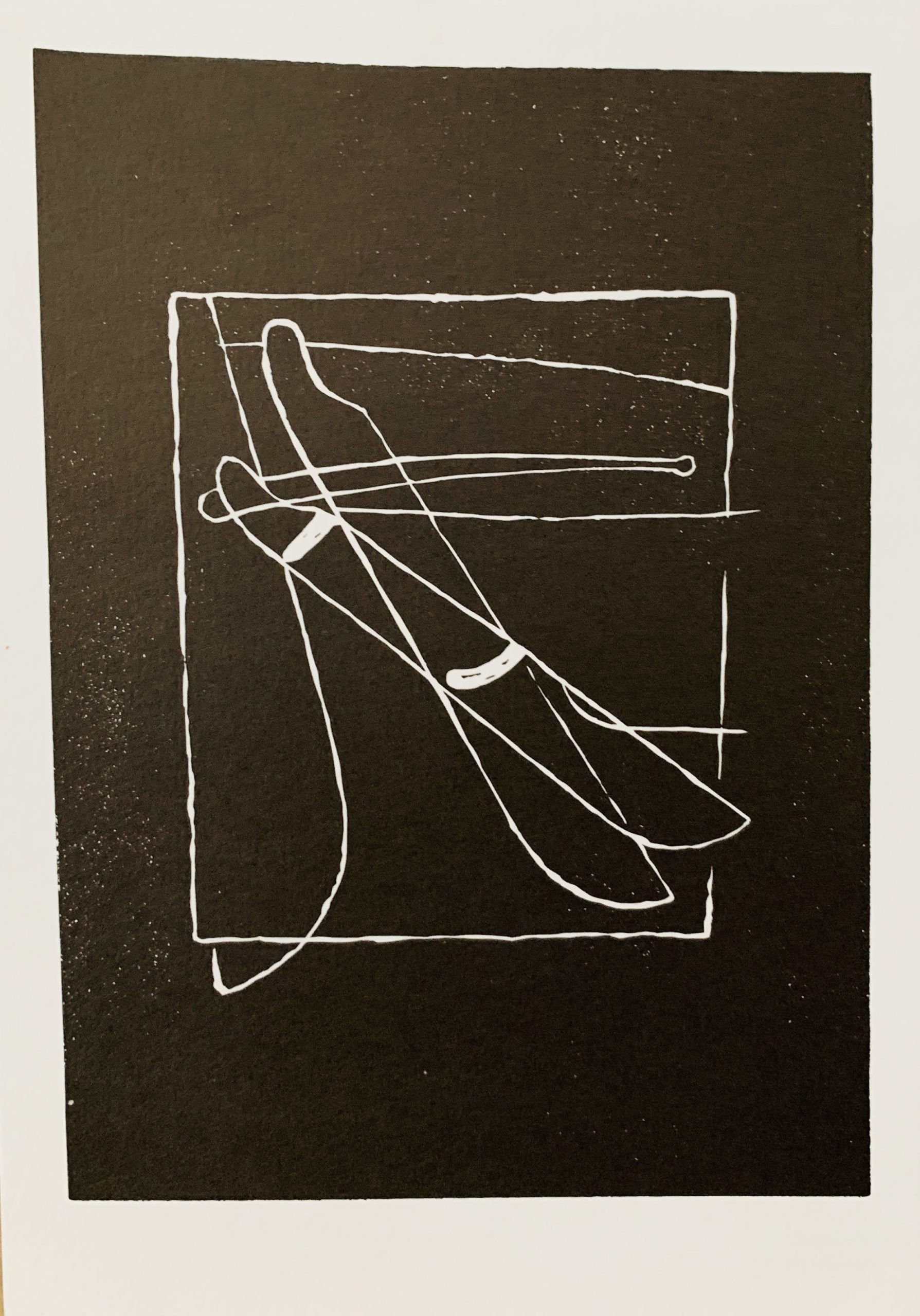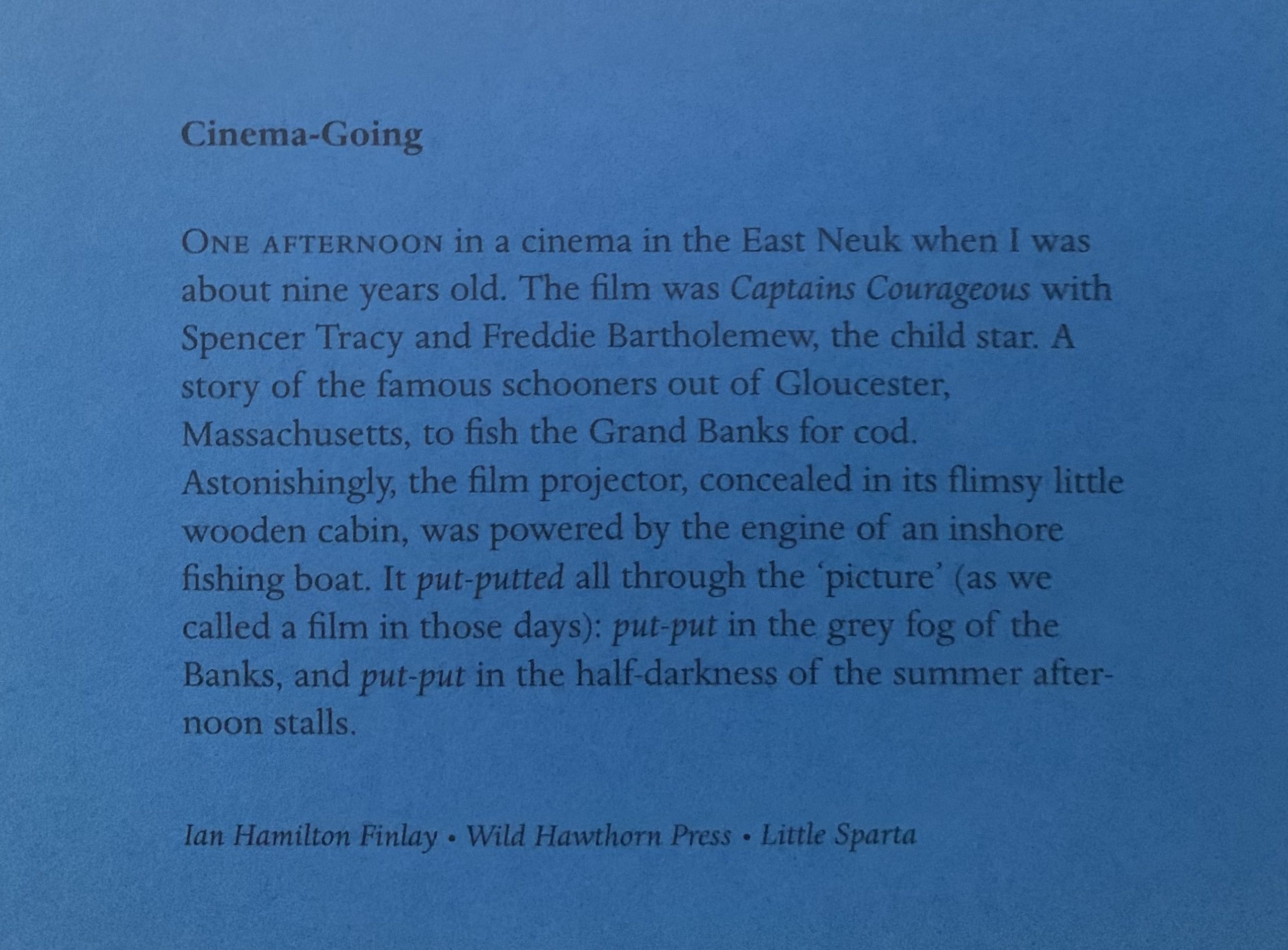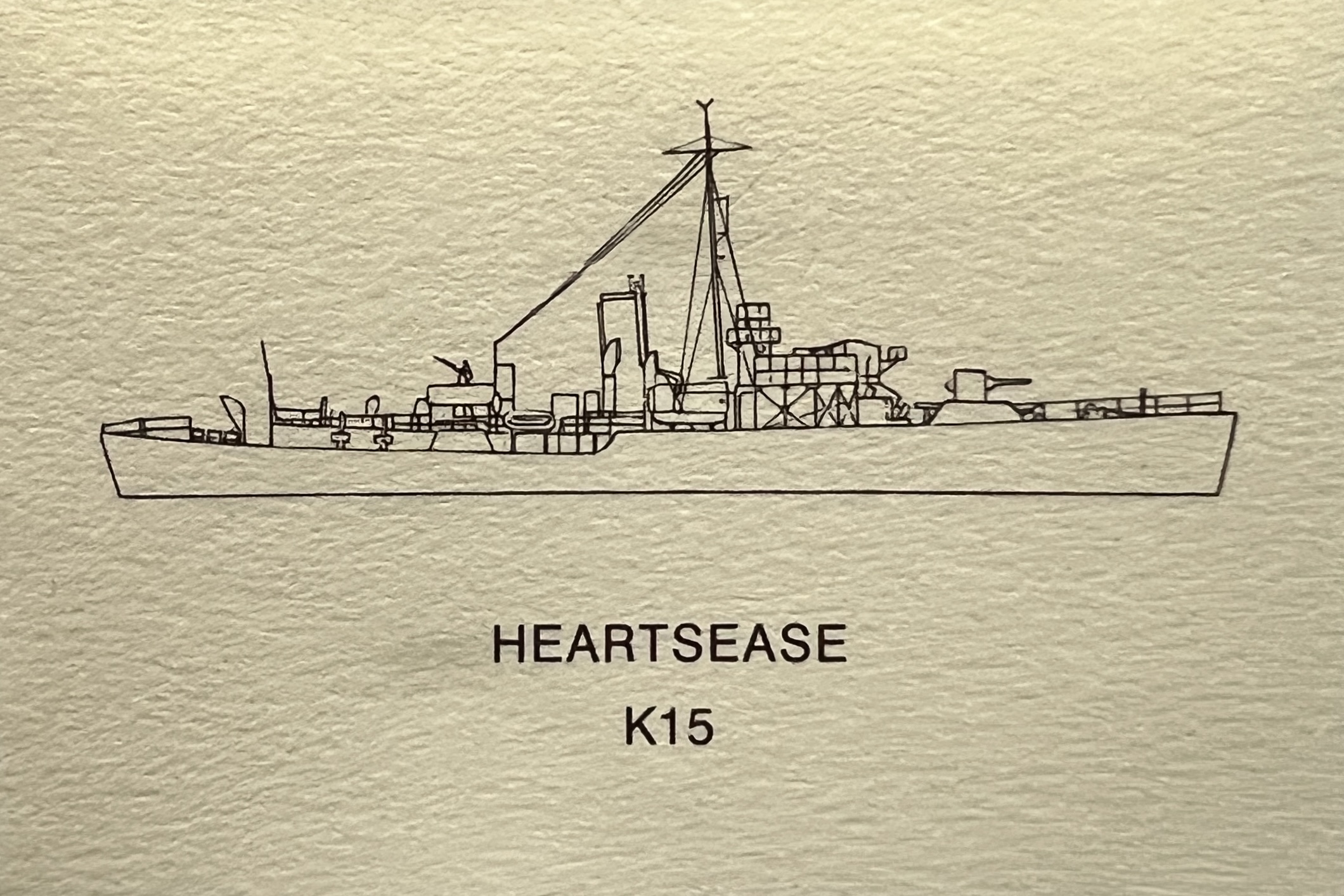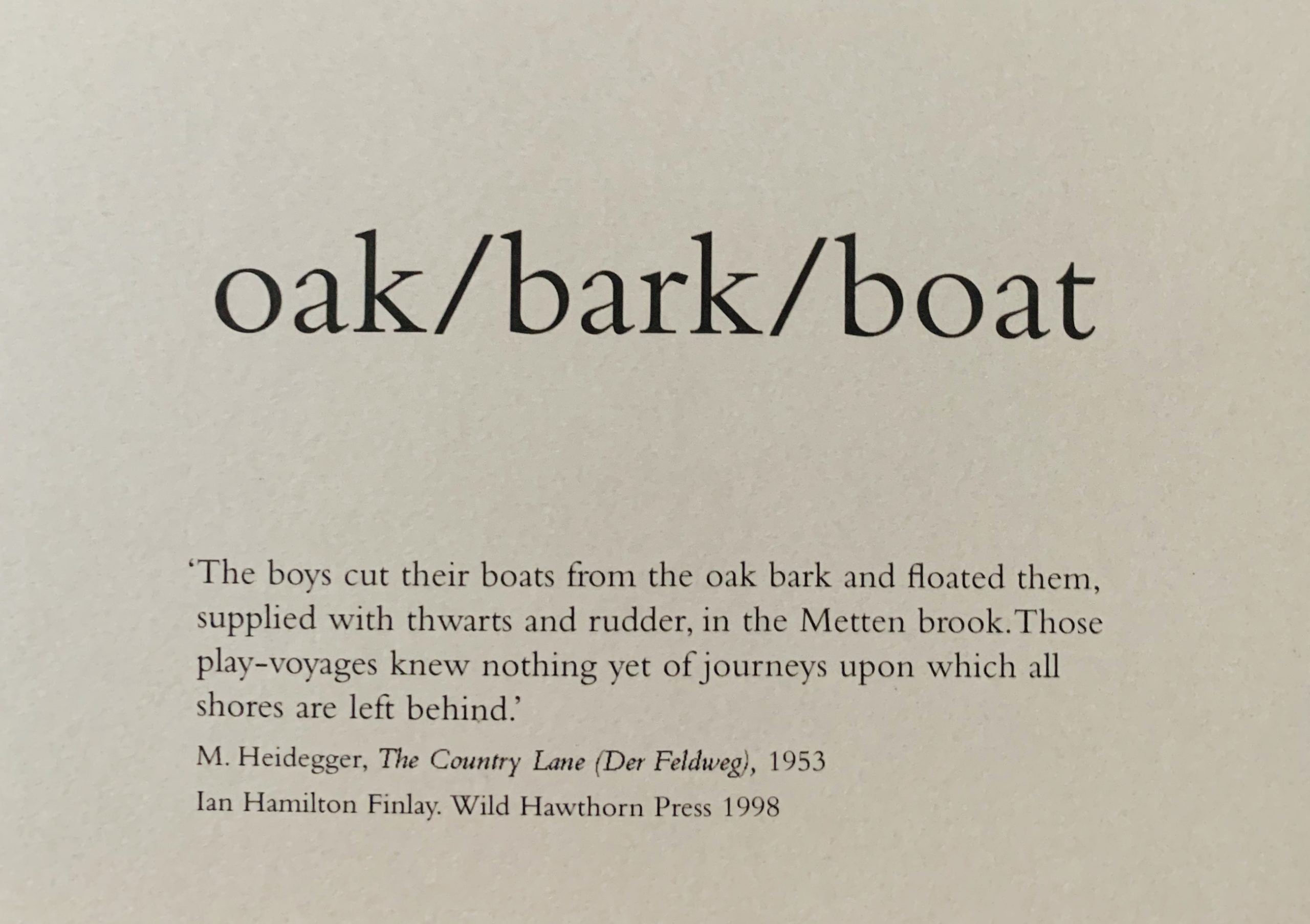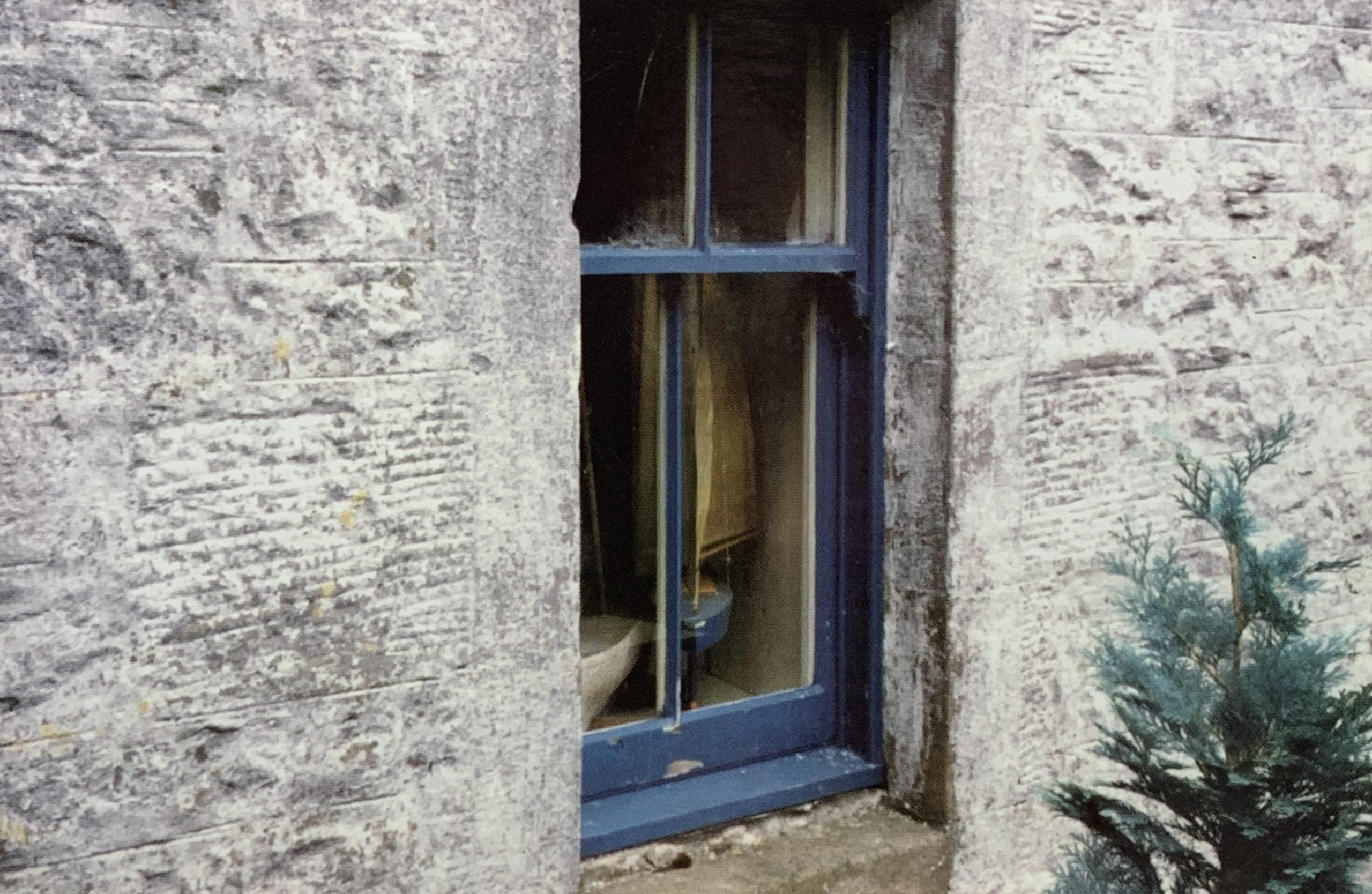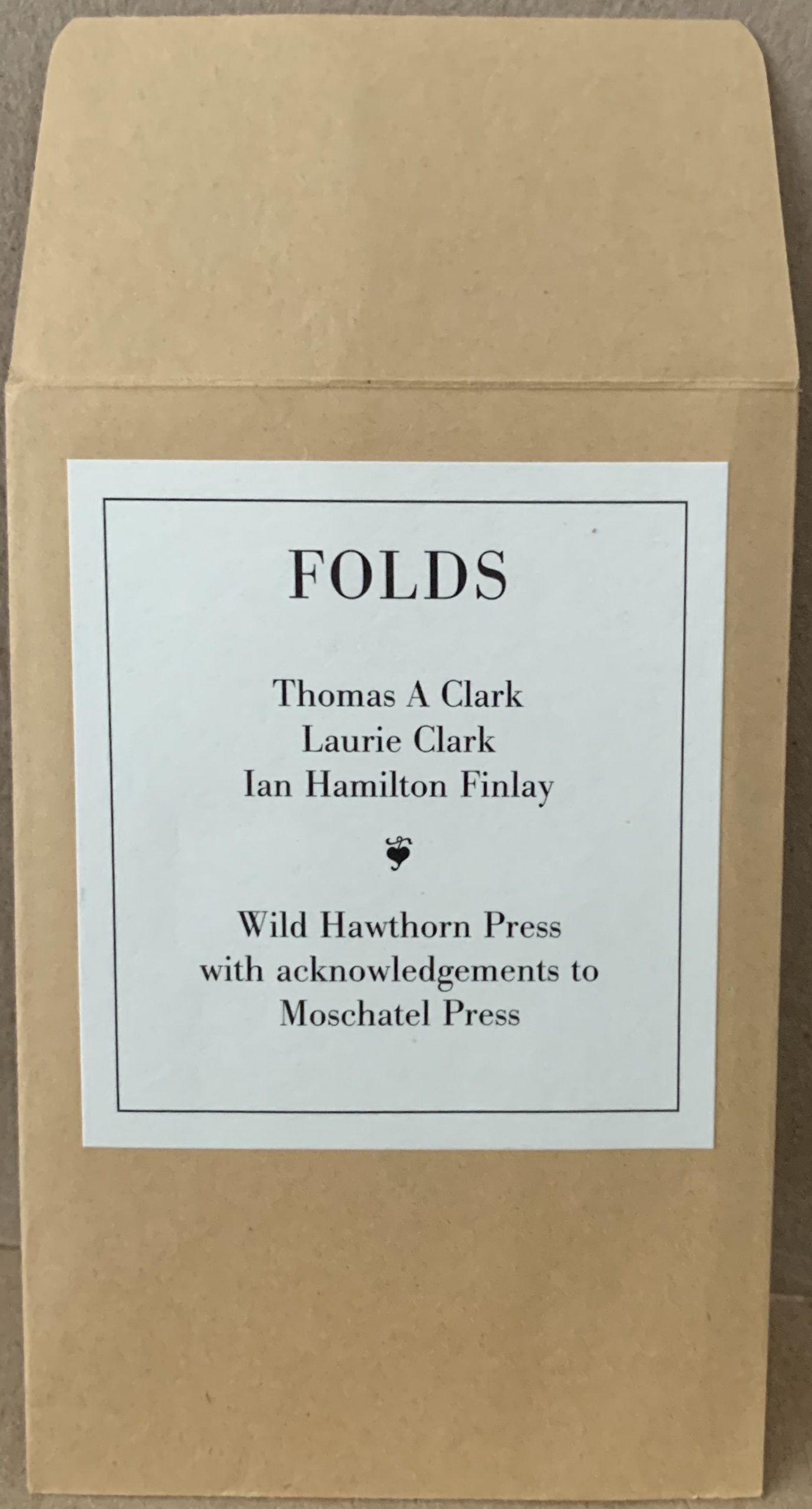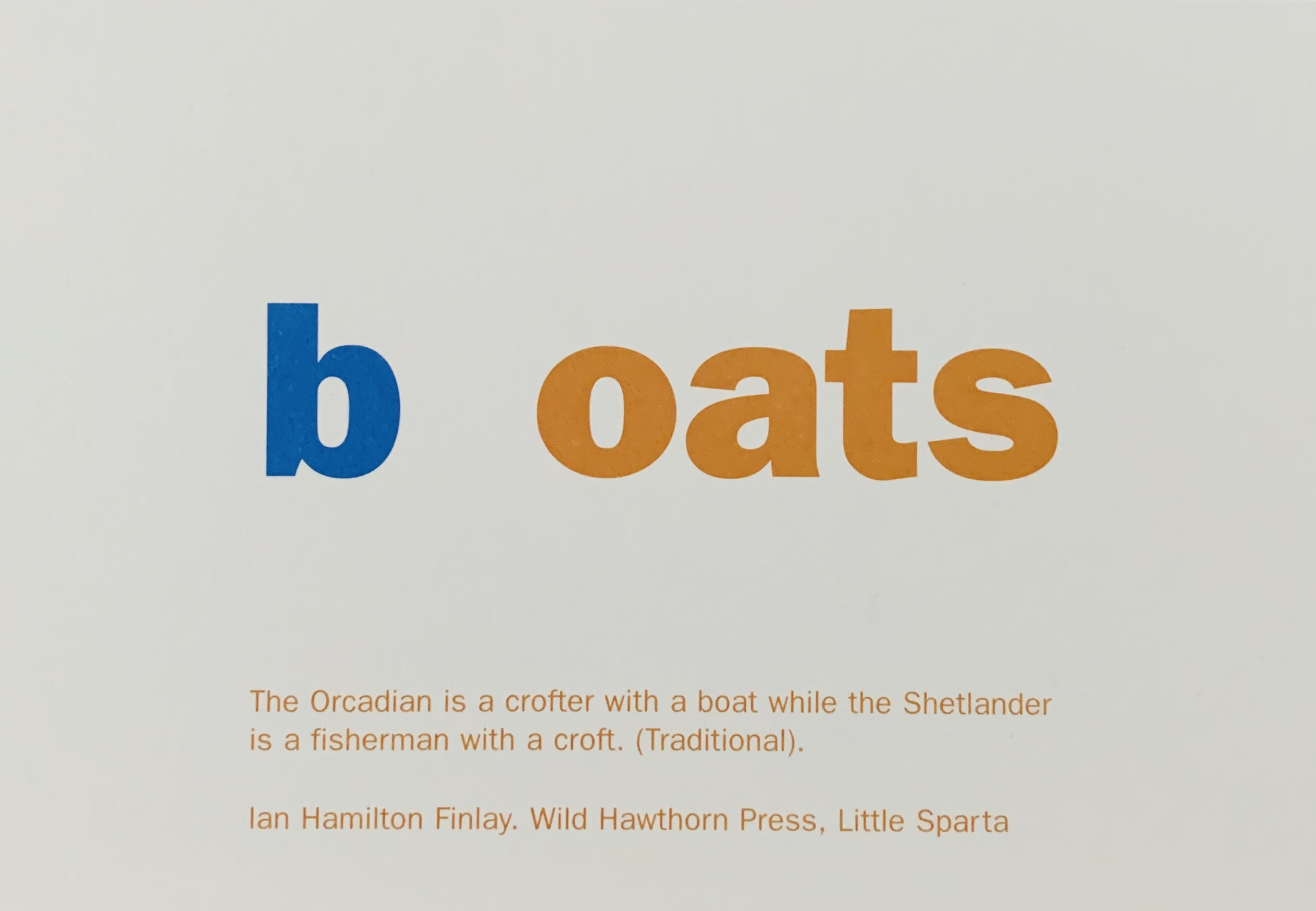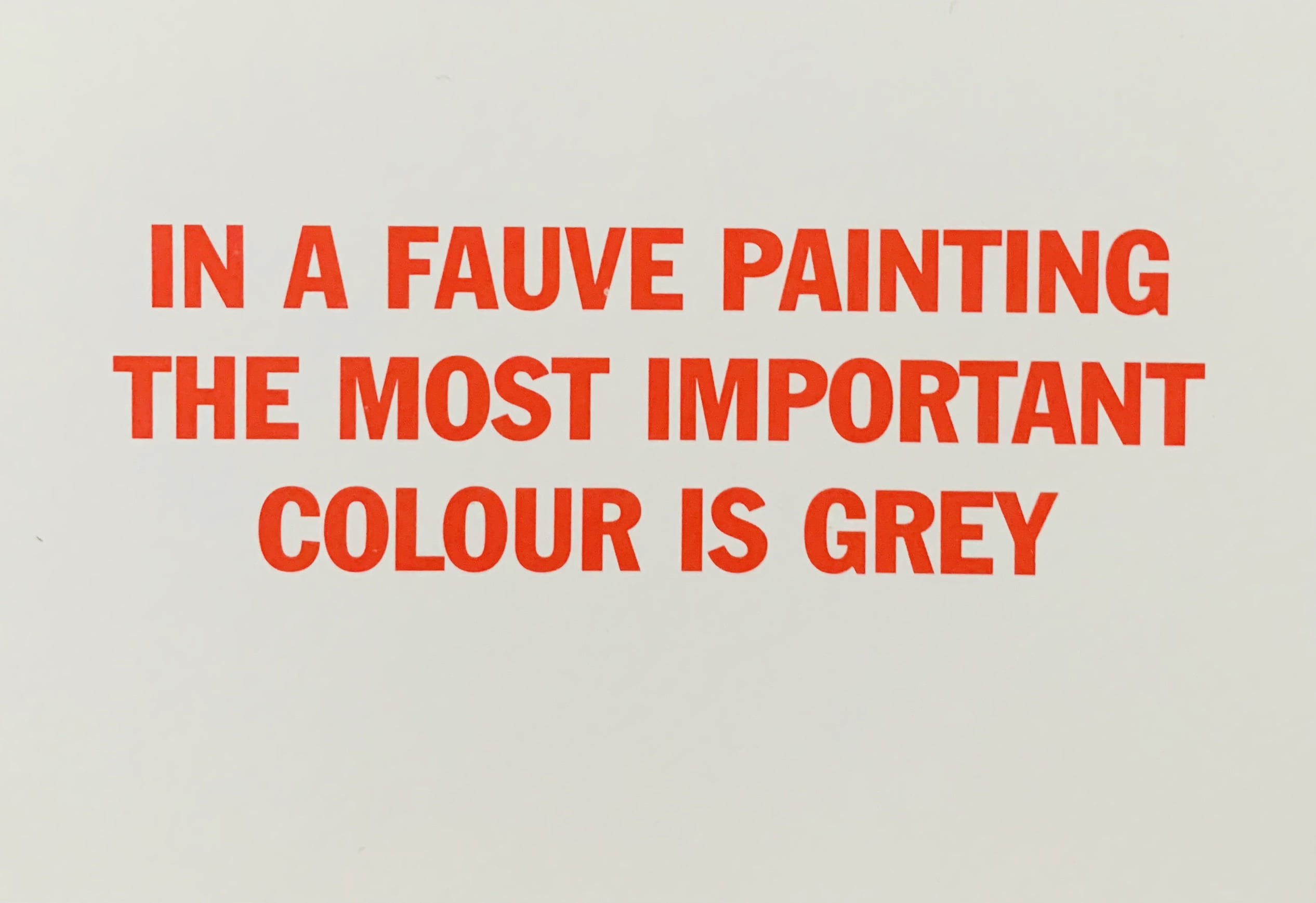Posted at 20:29h
in
Artist's Postcards
Little Sparta: Wild Hawthorn Press, 1998
10.2 x 15.2cm, 1pp artist's card printed brown on brown with a text in French:
LE SOCIALISME DEVRAIT FAIRE POUR LE PEUPLE CE QUE LE CUBISME
A FAIT POUR LE COUTEAU, LA FOUCHETTE ET LEA CUILLERE.
In translation that reads that "socialism should do for the people what cubism has done for the knife, the fork and the spoon".
Cubist still-life paintings often showed common implements such as knives and forks as significant elements in their composition, and Finlay here is suggesting that socialism should raise the lot of working people and give them significance in a similar manner. Finlay's politics are often assumed to be right-wing because of his interest in virtue, piety and classicism but that is not necessarily the case. This is the first of two cards with the same content but the design is different here with much more formal typography. VG+.
...


